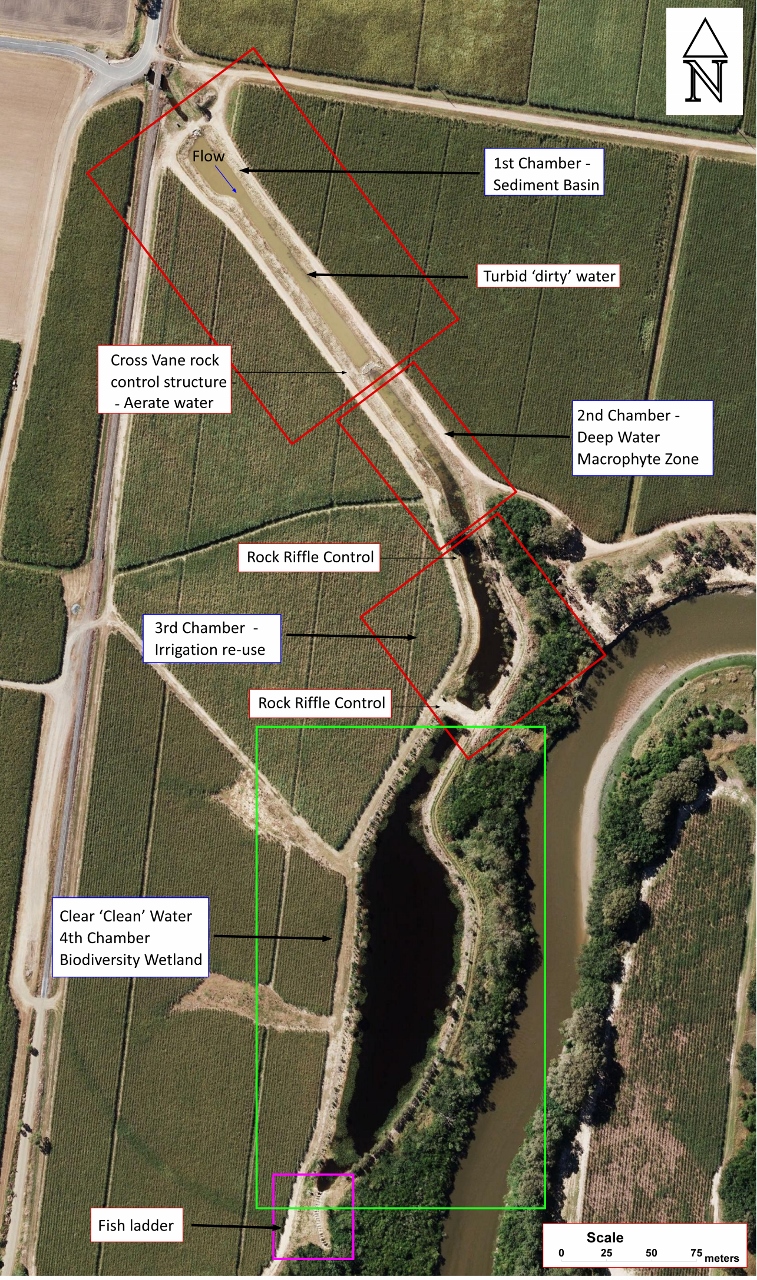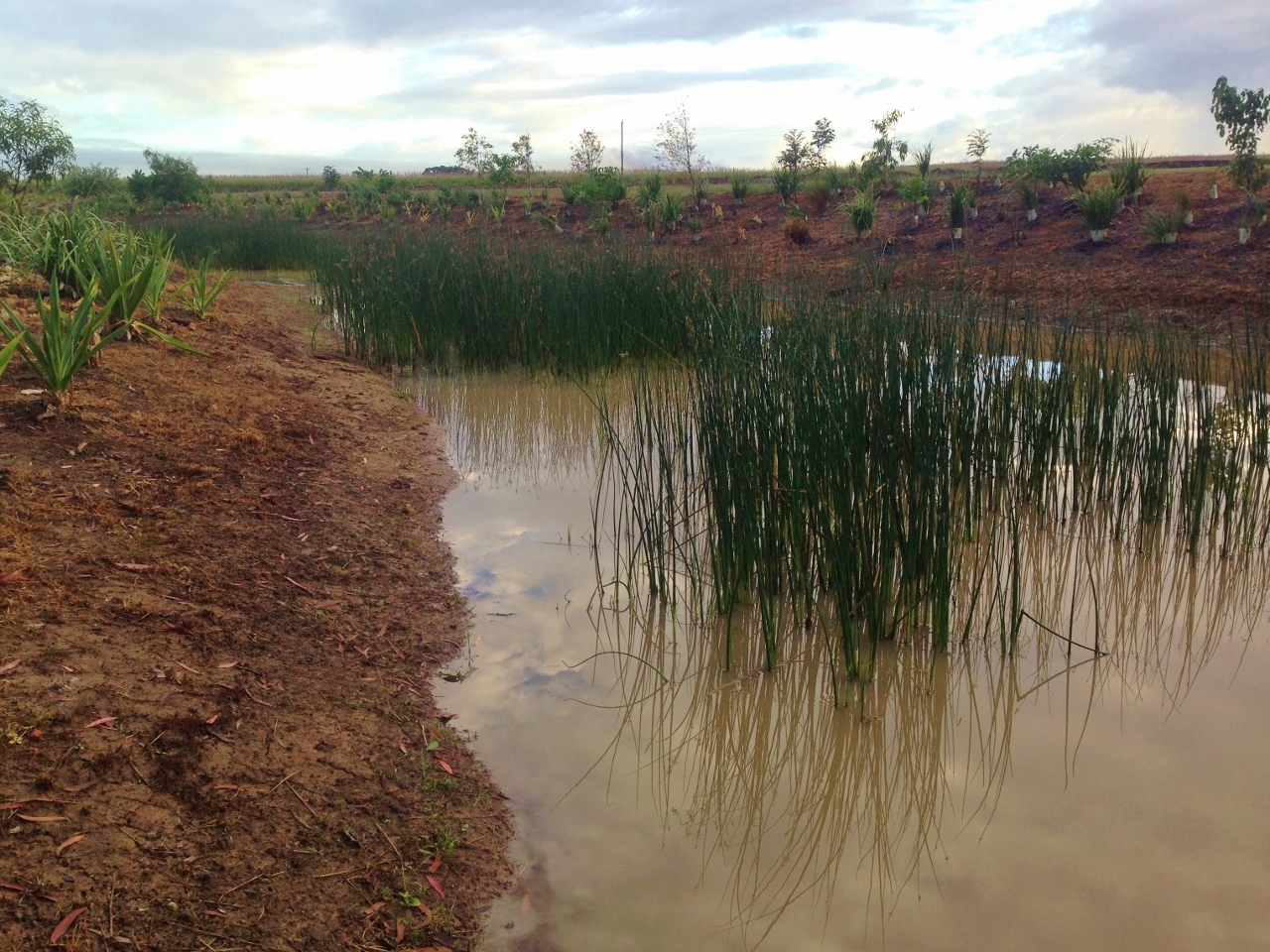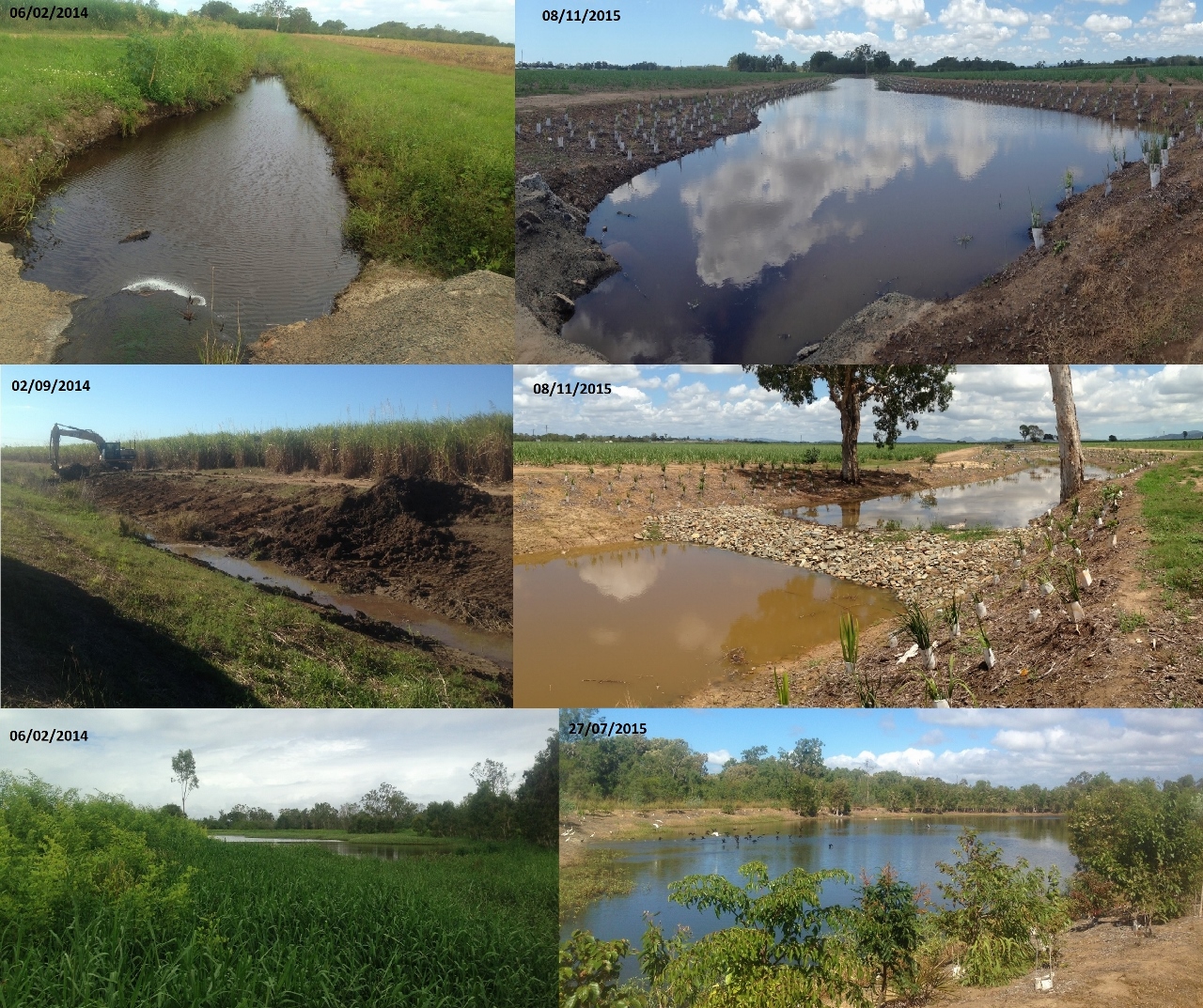This train is a treat
Sep 28, 2016
Wetland ‘treatment train’ improves water quality and runoff from agricultural land Catchment Solutions, in collaboration with Reef Catchments NRM and Mackay cane farmer Shane Cowley have created a treatment train of wetlands to treat poor water quality runoff from adjacent sugar cane farms reaching the Great Barrier Reef (GBR) in the Bakers Creek Catchment, Mackay…
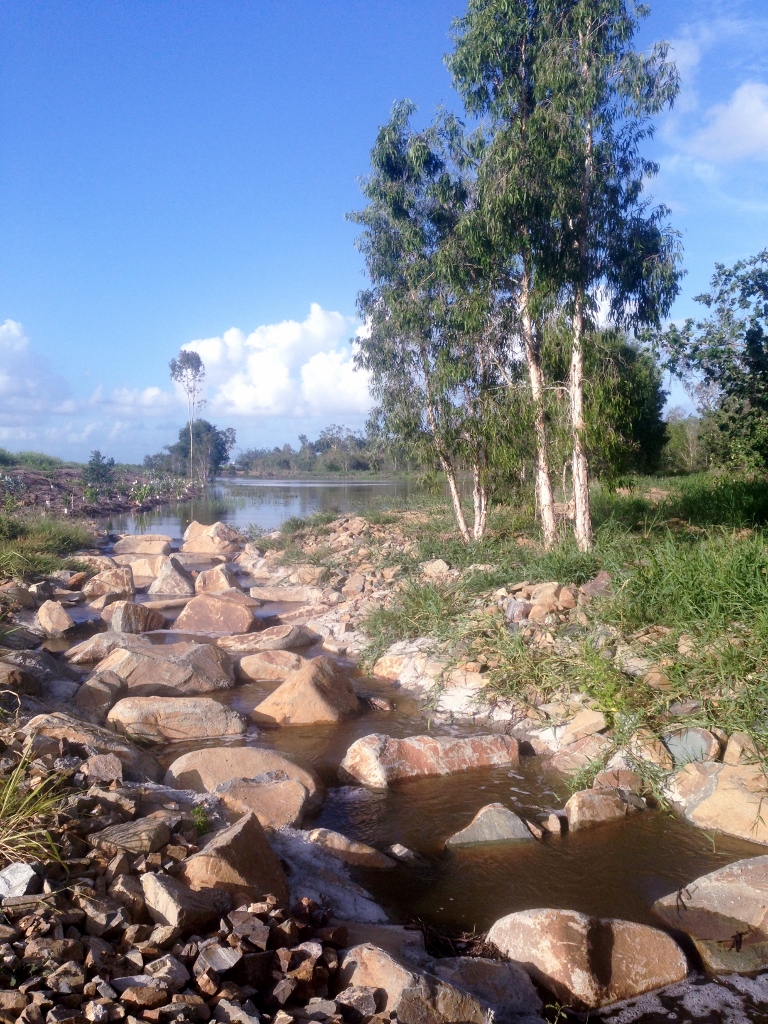
Wetland ‘treatment train’ improves water quality and runoff from agricultural land
Catchment Solutions, in collaboration with Reef Catchments NRM and Mackay cane farmer Shane Cowley have created a treatment train of wetlands to treat poor water quality runoff from adjacent sugar cane farms reaching the Great Barrier Reef (GBR) in the Bakers Creek Catchment, Mackay in central QLD.
Aerial drone footage showing the Treatment Train.
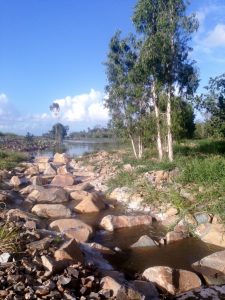 The project took an holistic approach to wetland design, by treating water quality flowing to the GBR while also providing and enhancing habitat for biodiversity.
The project took an holistic approach to wetland design, by treating water quality flowing to the GBR while also providing and enhancing habitat for biodiversity.
This was achieved by constructing four water quality treatment chambers – sediment basin, deep water macrophyte zone, detention irrigation re-use chamber and rehabilitating the existing wetland (last chamber). Endemic native vegetation was planted around the wetland, including macrophytes in the deep marsh zone. A rock-ramp fish ladder was also constructed to improve aquatic connectivity between the downstream estuary and the constructed wetland, which provides important habitat for economically important fish species such as barramundi.
The wetland was designed to capture and treat the first flush flow event (30-40 mm) of the wet season (Oct-Dec), prior to discharging into an existing wetland before eventually flowing into Bakers Creek Estuary and the GBR.
The landholder (cane farmer) is able to re-use the water from the third chamber to irrigate his sugar cane crop. Prior to the construction of the upstream treatment chambers, water high in nutrients,herbicides and pesticides flowed straight into the wetland causing fish kills.This water was then pumped right down for irrigation re-use onto adjacent sugar cane. Now, this wetland is managed for biodiversity, with the water treated in upstream chambers and no pumping down of the biodiversity wetland.
Water quality sampling was undertaken during flow events via auto samplers. The results have been significant, delivering both environmental improvement, as well as allowing the cane farmer access to increased irrigation capacity. Fish ladder monitoring and fish community electrofishing have also occurred.
“This extra water means that I can irrigate nearby cane blocks several more times each year and significantly increase their production, as well as improving the water quality for my wetland and the Great Barrier Reef lagoon.”
– Shane Cowley, Cane Farmer, Bakers Creek.
Results (snap shot)
Event 1 (30-40 mm) Dec 2014
NOx-N – 85% reduction
Phosphorus (total and ortho-P) – 50% reduction
Diuron – 59% reduction
Atrazine – 61% reduction
Hexazinone – 55 % reduction
Between last flow event in Feb 2015 to October 2015
86% reduction of N
90% for P
80% for TSS
